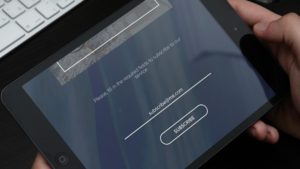By Elissa Quinby, Senior Director, Retail Marketing, Quantum Metric
The recent news that workers at the Port of Felixstowe may be striking, coupled with Royal Mail workers set to hold a whopping 19 days of strike action during the peak postal build-up to Christmas, deliveries over the next quarter will be plunged into chaos. Shipping delays are a headache for retailers, but also significantly increase consumer’s frustrations, which can trigger a drop in retention, which results in revenue losses.
At a time when consumers are cautious with their spending, building a positive experience for brand interactions is paramount p and part of this is tackling delivery disruption head-on.
This can be achieved by offering real-time customer alerts, promoting hybrid shopping and diversifying shipping options.
Taking real-time action
Regardless of shipping partners retailers choose, there’s still a chance customers will experience issues. Indeed, data from our benchmarking survey revealed that 67% of Brits had at least one package ‘ghosted’ – severely delayed or lost – in the last year.
With that in mind, retailers should stay connected with their customers and take responsibility for communicating delivery timelines, especially with the festive season approaching. How? By alerting shoppers about shipping estimates and activity at each critical moment in their purchasing journey, from the moment they click on a product to check out, plus each point after the item leaves the facility.
While it tends to be overlooked, providing easy access to post-purchase support is also crucial. As budgets tighten and delivery disruptions are on the horizon, retailers should focus more on this area.
Combined, these types of communication help people feel more informed, minimising frustration and cultivating long-term loyalty.
Encouraging hybrid shopping to avoid delivery issues
Another way retailers can make an impact is by encouraging click and collect – a more cost-effective method than shipping products, with the bonus of driving new revenue by bringing in foot traffic. It’s also fast and convenient for shoppers, eliminating the risk of missed deliveries.
To incentivise hybrid shopping, retailers can offer personalised deals and discounts, unique perks via loyalty programmes, or cut fulfilment time to hours rather than days. But as in-store traffic rises, it’s vital to take an omnichannel approach to customer insights by understanding how the digital experience (DX) translates when people get to the shop.
For example, online customer journey metrics may look strong, but that doesn’t necessarily mean the brick-and-mortar experience is seamless. If people are confronted with long click-and-collect queues, they’re unlikely to use the service again, even if their DX was friction-free.
Only by looking at the whole picture, can retailers empathise and take action to ensure the end-to-end shopping experience is smooth. That’s where gathering data from customer surveys and building dashboards to correlate order volume with staffing and wait time come into play.
Expanding delivery partnerships
To prevent external shipping carrier issues impacting retailers, diversification is key; relying on a single carrier is too risky. By broadening partnerships to include multiple carriers, merchants have significantly more flexibility.
Businesses should also consider investing in their own outbound logistics, as an alternative to traditional third-party shipping services. Not only does that give them more control over the delivery process, but it also creates a new revenue stream.
As retailers continue to see a steady increase in online sales, shipping delays become even more impactful on the customer experience, retention rate, and revenue.
Taking these steps will help retailers mitigate the risk of delivery issues and prepare for potential carrier disruption this autumn. Improving customer communication, looking for alternative shipping means and solidifying omnichannel experiences are all mitigating factors that can take away the pain for customers.








